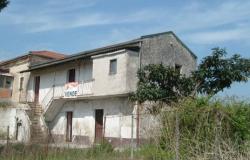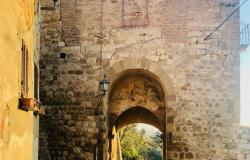“In the niche market in which we operate—that for traditional farmhouses and townhouses, restored or for restoration, in attractive rural locations or in historic villages and towns—the subjective nature of the buyer’s perception of value is invariably a significant factor in determining price,” warns Coombes.
This market is small when compared to the mainstream Italian one, making it hard to extrapolate statistics on prices.
“The detailed information available from the Agenzia del Territorio ( the government body responsible for providing statistics on all types of property transactions), with current prices per square metre by building type by single town, has only a tenuous link with the type of property most foreign buyers are looking for,” Coombes explains. “Hence the reference to the subjective element and the need to look at “our” kind of properties on a case by case basis.”
That said, he adds, to assess the reasonableness of a property’s asking price, it is worth conducting a research on the internet “to find a group of other properties on sale in the same area which are broadly comparable in terms of size, character and location. Many sites include the surface area in square metres. This enables a basic comparison of prices per square metre to be made.”
Cluttons ran a similar survey in the first half of 2008 on a small but representative sample of well restored farmhouses with pools and an average of 6 bedrooms in Umbria and Tuscany, south of Florence. It determined an average asking price of about €3,900 per square metre. “On a similar sample of smaller farmhouses (3 to 4 bedrooms) on sales taking place in 2007 and 2008 in the same general area, for which Cluttons knows the actual selling prices, the average figure is lower at about €2,800 per square metre,” says Coombes.
The gap, he explains, is partly down to the properties’ different sizes in the two samples, but to a degree it also reflects the difference between the asking prices and the finally negotiated prices. “On this last point, it is difficult to obtain reliable data, but particularly in today’s market it is reasonable to assume that asking prices will be discounted by an amount which reflect the personal circumstances of the vendor,” Coombes says.
Magic Marche’s Smith also recommends buyers become familiar with the Italian system of quoting prices per square metre, so it is easier to get some benchmarks. “Estate agents in Italy all quote the square metre of the house. Prices significantly below average price per square metre figures will represent fantastic value.”
For example, in the Marche, where Smith operates, “for an unrestored farmhouse with a main house of up to 250 sq.m., you can expect to pay a maximum of €900 per square metre.” For a main house of 250-400 square metre, expect to pay a maximum of €450 per square metre—this is because “the larger the house, the bigger the restoration cost, which deters many buyer,” Smith says. So, she adds, “for a 200 square metre unrestored house, which would make 4 bedrooms, a price circa 180,000 euros should be the maximum. Beat this and you are doing well.”
However, be location-wise whe comparing property prices, urges Travella. “If you see a house with an amazing view in a great location, and the same house without a view in the same village but not such a good location, there will be a price differential for sure.”
In Le Marche, for example, proximity to the sea and a good location with the right type of land can make a huge difference, according to Smith.
“If a house is within 15 minutes of the coast in a favoured location, this will increase the price per square metre by up to 20%. For houses within walking distance of the sea, double the price. A good location, and land containing vines and olive trees can add up to 20 %.”
For a restored townhouse or an apartment in Le Marche, Smith says, “expect to pay a maximum of €1400 per square metre if you buy inland from a private seller, or €500 square metre if unrestored. Expect to pay €1800 per square metre if you are buying a restored property inland (with no sea view) and from a developer. So, for a ready-restored townhouse or apartment of 150 square metre (a 3-bedroom property), a price of circa 210,000 euros should be the maximum. Beat this and you are doing well.”
Incidentally, Smith believes that the townhouse and apartment sector in Le Marche “currently represents great value and if Le Marche follows what has happened in Umbria and Tuscany, townhouses and apartments are set to become increasingly popular. This is good for those with long-term investment ambitions.”
Be aware, though, that coastal locations will carry a considerable premium. “In Le Marche, expect to pay a maximum of €2,700 per square metre for anything within five minutes of the coast and/or with a sea view: here you are competing with the Italian holiday home market.”
To get the best possible bargain, Smith adds, “negotiate very hard and look out for houses flagged with ‘Price Reduced.’ This usually means the owners are particularly keen to sell and will negotiate further. Of interest, Magic Marche has recently seen price reductions of up to 30% for houses requiring a quick sale.”
And if you really want to make sure you are not overpaying, “you can also opt to have a valuation carried out by a surveyor,” says Travella. “You would have to have this done before you put in an offer and be prepared to write off this cost if you decide not to go ahead.”
How to determine the right price to pay for a property

Words by Carla Passino
You may also be interested in...
Latest property in Italy
370 m²
7 Bedrooms
279000
66 m²
2 Bedrooms
179000
210 m²
4 Bedrooms
135000
270 m²
4 Bedrooms
0
170 m²
2 Bedrooms
45000












